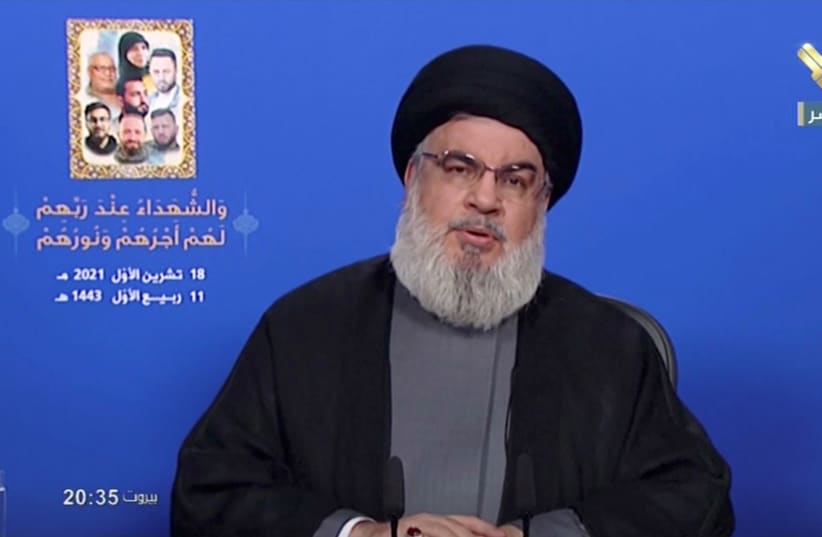A Hamas delegation, led by senior official Khalil al-Hayya, met with Hezbollah leader Hassan Nasrallah, Iranian state media IRNA reported, adding that they “discuss[ed] the latest developments in Gaza and occupied Palestine.” The meeting took place as Hezbollah increased its aerial attacks on northern Israel on Wednesday, after key Hezbollah commander Hussain Ibrahim Mekky, loosely in charge of the southern Lebanon region, was killed overnight Tuesday.
According to the reporter, who has excellent connections with Hezbollah, “the talks focused on the recent Gaza truce talks and international political policies on the issue, as well as the students’ uprising across the world against the Israeli regime’s crimes in Gaza.” Hamas and Hezbollah, both backed by Iran, are using the October 7 attacks, led by Hamas, to instigate a worldwide crisis.
This is a manifestation of Iran’s attempt to reshape the world and regional order after October 7. Hezbollah began its attacks on Israel just one day later, joining the Gaza war. Since then, the Lebanon-based terrorist group has carried out thousands of attacks on the North, wounding or killing Israelis every week. Some 50,000 northern Israeli residents were evacuated and are unable to return to their homes.
Hamas-Hezbollah coordination in recent years

Over the past few years, Hamas and Hezbollah have increased coordination. According to IRNA, during this recent meeting, the two sides spoke about how to fulfill the goals of the October 7 war. “They also hailed the cooperation and solidarity among regional resistance groups as well as their sacrifices for the Palestinian cause,” the report added. This is all while Israel-Hezbollah tensions rise to a simmering point below the surface.The IDF confirmed on Wednesday that Mekky was assassinated: “He was a senior field commander in the Hezbollah terrorist organization on the southern front who was responsible for the planning and execution of numerous terrorist attacks against Israeli civilians and territory since the start of the war. As part of his role in the Hezbollah terrorist organization, Mekky was responsible for various acts of terrorism against the Israeli home front, and he previously served as the commander of Hezbollah’s forces in the coastal region.”On Wednesday, Hezbollah attacked areas near Mount Meron. Sirens sounded in several places, including Meron, Sasa, Bar’am, Jish Or HaGanuz, Kfar Hoshen-Safsufa, Kiryat Shmona, Misgav Am, Margaliot, Kfar Giladi, Tel Hai, and Sasa. Around 60 rockets were fired.Al-Mayadeen media, also pro-Iran, reported on the Hamas-Hezbollah meeting as well, indicating how important it was to Iran, Hezbollah, and Iran’s other proxies. Coordination with Hamas is part of the Iranian agenda for the next phase of the war as the Islamic Republic continues to closely watch Israel’s moves in Gaza, where, in recent days, the IDF continued to advance in Rafah and Jabalya, defying pressure from abroad to end the Rafah operation.
